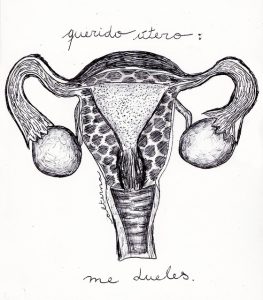The beginning of female reproductive life occurs with the onset of menstruation. But do you know what menstruation is? It may seem obvious, but many people don’t know what menstruation is or what to do when it starts or doesn’t start. Many mothers feel embarrassed to talk about these bodily changes, but it is necessary. How about starting to understand this better so you can explain it? So let’s start at the beginning.
All women are born with hormones; we can say that as children these hormones are dormant, with low activity in the body. More active hormone production starts around age 10 or 11, sometimes earlier in some girls. Stimulation of the pituitary gland causes changes in FSH, progesterone, and estrogen, prompting the body to begin its transformation. The breasts develop, hair appears and grows in different parts of the body, including the pubic area, underarms, among other signs of puberty. With so many changes, both mother and daughter should stay alert, and this is a great time to explain to your child what menstruation is, if you haven’t already.
A lighthearted explanation in kids’ language!
But What Is Menstruation, Really?
Menstruation is the shedding of the inner lining of the uterus, which is built up as eggs are being stimulated to grow so they can be released during ovulation. We could say that the cycle starts when estrogen and FSH are released; these are responsible for maturing the eggs that already exist in a girl’s body. All women are born with their egg reserve, approximately 300 thousand eggs!! It’s important to point out that eggs are not replenished during a woman’s life; these are the only ones she’ll have. The blood-rich lining that is built to welcome the fertilized embryo in the uterus is the endometrium, and if there is no fertilization, the endometrium detaches, which is when menstruation begins.
With the start of the menstrual cycle comes the possibility of pregnancy. The cycles and their phases may or may not involve ovulation, but generally, in 70% of cycles, a mature egg is released and if not fertilized and implanted, menstruation occurs. Most girls at the beginning of their menstrual phase may have irregular cycles, which tend to become more regular over time. The appearance of the period may also look unusual at first, darker or more orange in color. Normally, a cycle lasts 28, 30, or 32 days approximately, and always occurs about 12 to 14 days after ovulation.
If your period doesn’t come, women who are sexually active might be concerned. A woman who menstruates and is sexually active can get pregnant, but the absence of menstruation is not always caused by pregnancy. There are other possibilities such as anovulatory cycles, hormonal changes, and even early menopause. What is dark, coffee-grounds-like period blood? This may be a hormonal change or even due to contraceptive use. The brownish blood can also be a sign of a first period, called menarche. Some women have brown discharge before and after the bright red blood. Menstruation can also come in the form of clots, which is a sign of high estrogen—this is normal. Not sure if your period is normal? A gynecologist is the specialist for these situations, and mothers should take their daughters for a first gynecology visit when periods start, to begin ongoing care.
See also: Coffee Ground-Like Period Blood – What Is That?
Photo: alterna ►













